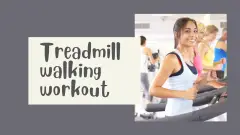Get started running with this 30 day walk to run challenge. It eases you in gently, starting with just walking in the first week and leading up to 10 minutes of running on day 30. All through, you get some walk only days and rest days to give your body a chance to recover and adapt.
What you will need for the walk to run challenge
You’ll need suitable footwear. Because running is a high impact exercise, it’s best to wear training shoes that will absorb some of the impact. You also need to wear comfortable clothes that you won’t overheat in. It’s important to stay hydrated when you’re running, so make sure you take a bottle of water. Finally, you need to be able to time your intervals – either with a watch or phone app.
Please read these general exercise guidelines before you do the challenge.
Planning a route
As the times spent walking, fast walking and running change each day, route planning is a bit tricky because the distance you will cover changes each day. To keep it simple:
- Plan a route for the final day. This is the furthest you will cover. At average walking and running speeds you should cover around 1.25 miles.
- For all the other days, follow this route for 7.5 minutes, then turn around and go back.
Buying a treadmill for home use
Now that folding treadmills are widely available, having a home treadmill doesn’t mean you need a dedicated workout space. You can fold your treadmill up and store it out of the way between workouts. If you’re thinking of buying a home treadmill, here are some points you should consider:
- Are you likely to run on it? If so, you should avoid very lightweight models. Also, a cushioned running/walking deck will help to absorb impact.
- Dimensions: there’s a slight variation in dimensions between models. If you’re tall, you might prefer a longer walking/running deck to allow for a longer stride. Obviously, the treadmill needs to fit in your chosen storage place when it is folded away.
- What sort of a console do you want? Is it important to you to have a multi-feature console with a choice of preset programs, or will you be happy with something simple that just lets you set speed and incline? Extra functions add to the cost of the treadmill, so think about whether you really need them.
- What is the incline range? Some treadmills only have a limited incline range. Models that offer up to 12% give you more options to vary your workouts and to challenge yourself more as your fitness improves.
- Maximum speed – if you run fast, or plan to do sprint intervals, you should bear the maximum speed in mind. For walking, or average speed running, any treadmill will be fine.
See a treadmill buying guide here.
Walk to run challenge schedule
There are 3 different levels on the schedule:
- “Walk” means walking at your normal walking pace.
- “Fast walk” means walking fast enough to feel warm and slightly out of breath
- “Run” means run at whatever speed you can manage
Here are the intervals at each level:

Get a printable copy of the schedule
Sign up for My Fitness Planner updates and get the free printable download link e-mailed to you:
After you sign up, you’ll get 2 e-mails, one will have a link to your printable download and the other will be a welcome e-mail.
If the e-mails haven’t turned up within a few minutes, please check your junk folder, as some service providers have very strict filters.
Related to walk to run challenge
Challenge FAQs
The first day of the challenge should feel like it needs a bit of effort, but not too much. If you really struggle with day 1, then you probably won’t get through the challenge. The idea with the challenges on this site is that the first few days get you used to the exercises and the daily habit. Usually about halfway through the challenge the effort levels start to increase more quickly.
Avoid challenges that increase effort levels very quickly – they’re simply not realistic. It’s unlikely that, for example, you would be able to increase how many squats you are able to do by 10 a day for 30 days, or increase your plank hold time by 10 seconds a day for 30 days.
In general, allowing muscles 48 hours between workouts is good because it gives our bodies time to recover and adapt. Challenges are generally short workouts and for a limited period of time (usually 30 days), so not having many rest days won’t be a problem. With challenges that alternate exercises each day, it’s not an issue, because you’re using different muscles.
Fitness improvements don’t always happen in a predictable way. Sometimes we’re just not as strong or energetic for no apparent reason, or we hit a plateau. If you get to a point where you’re struggling to complete the day’s challenge, you can try one of the following:
- Take a couple of days off and start again where you left off
- Do the challenge on alternate days rather than every day
- Instead of increasing the effort every day, stay at the same level for 2 or 3 days and then go onto the next day of the challenge
Obviously these solutions mean the challenge will last longer, but you’ll still benefit from doing it.

